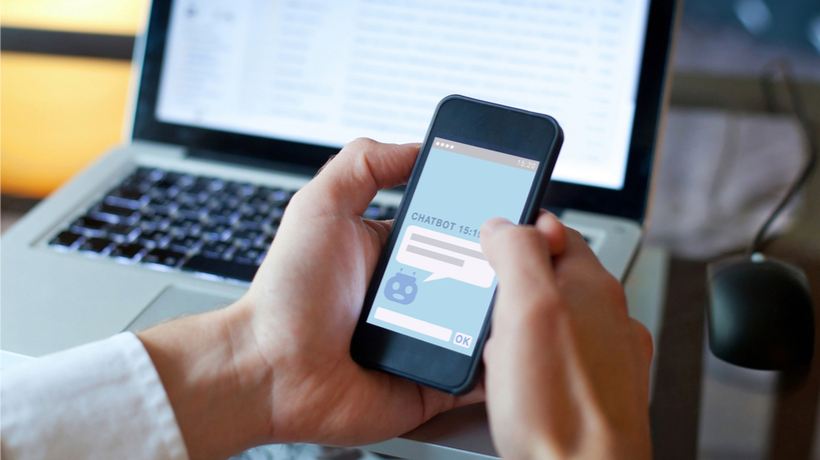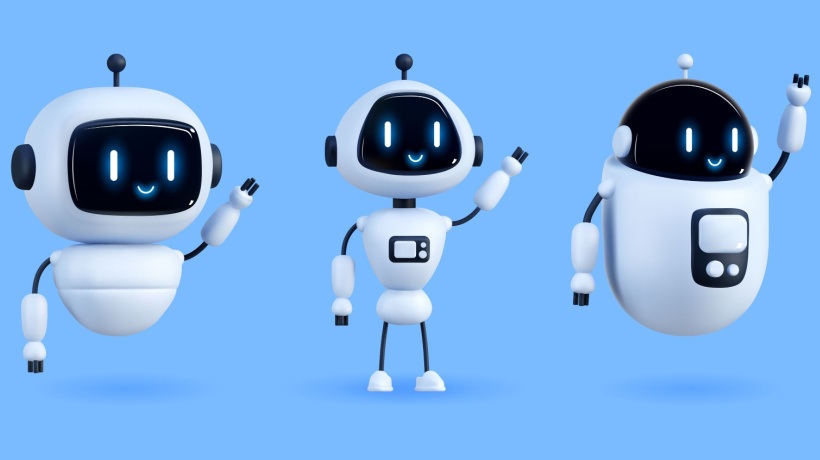Educational Chatbots: The Use Of Instant Messaging Apps In Schools
The emergence of affordable mobile phones is one of the most significant turning points in the history of education. These early devices had no internet, and their screen featured black letters and numbers, and green backlight. Even those simple phones could easily divert students’ attention, with SMS, and simple games like Tetris, Minefield, or Snake.
Today, many teachers are facing the same problem. Mobile phones got much smarter, and students use them for watching videos, listening to music, streaming events, browsing social media, and instant messaging.
Phones are not the only thing that changed. Teachers' attitudes towards cellular tech have made a significant shift in the past few decades. They went from banning and confiscating students’ phones to encouraging their use for educational purposes. These are great news! Today, we can find a few dozen articles on eLearning Industry that promote mobile learning and discuss its implementation in the classroom.
Still, the primary focus of this article isn't the forever trendy "mobile phone in the classroom" question, but the use of instant messaging apps in teaching.
Teachers, parents, and the several scientific studies blame these simple pieces of code for students' short attention span, lack of focus, bad memory, sleepiness, and self-obsession.
Ban Is Not The Solution
The teachers’ classroom battle against the tech corporations has been lost before it even started. One of the best examples is the New York’s city-wide mobile phone school ban that lasted from 2005 until 2015. This decision was highly unpopular among students, but also among their parents who, according to the New York Times news piece from 2015, were "unable to contact their children during school hours".
In the meantime, the progressive teachers, have stopped considering smartphones as a distraction and started motivating students to use them as an independent knowledge source.
Unfortunately, many students don't use phones for online learning, but for exchanging texts, photos, and videos with their friends, because instant messaging apps allow them to contact anybody at any time. The Nebraska Lincoln University’s study confirmed that 87% of their students who use digital devices, use them for texting.
The study called Teenage Communication in the Instant Messaging Era, conducted by Amy Quin, Bonka Boneva, Robert E. Kraut and Irina Shklovski, determined that "adolescents find IM especially useful for chatting with others while doing something else (i.e., multitasking)". The study also concluded that most teenagers use instant messaging apps for small talk, joking, and catching up.
Do Instant Messaging Apps Divert Students' Attention From Learning?
Depends on how we look at this problem. An IM app can dreadfully affect students' focus when it is exclusively used for chit-chat. But, it can also be useful when students want to catch up with the missed schoolwork. Some teachers even share their accounts with students, so they can consult them during studying hours or receive curriculum updates.
There is also a way for teachers to use instant messaging apps for automating basic lecturing and making it more interesting and engaging.
Chatbots Are A Game Changer
Texting students through their favorite apps would be both hard (especially with bigger classes) and weird. But, creating a program that will send lectures in the form of texts, images, audio, and video files, and test students' knowledge, is apparently a much smarter solution.
Imagine an interactive class, where students read lecture material sent by chatbots to their favorite IM app and ask for live chat support from their teacher when they stumble upon a problem they can’t solve. At the same time, they can also connect with other students in the class and work in groups.
Apart from creating a new channel and diverting students' attention from the IM chit-chat, educational chatbots bring various other benefits:
- Teachers will have more time to work with individuals and make sure nobody lags behind
- Students will adapt their learning pace in accordance with their needs and schedule
- Everybody will be able to access lessons and tests at any time of the day
- Students will be able to contact their classmates or teachers with one click and ask for help
- Teachers can quickly create their chatbots free of charge
How Can Teachers Build Chatbots?
Chatbots are trending, mainly because of the benefits they bring to customer service and sales departments. Their use in education is equally beneficial, and much more innovative, since development projects aren't driven by the expected investment returns.
That’s why we have seen some game-changing bots, like Jill Watson, that uses Artificial Intelligence to answer student inquiries. The chatbot development technology went so far that now even the teachers without any coding experience can build and use bots on various communication channels. These include the favorite instant messaging apps like Messenger, Skype, Kik, and WeChat, as well as website and in-app chat windows and chat rooms.
Rule-Based Bots
Although many developers like to brag and tell people that they work with A.I., most chatbots don’t include Artificial Intelligence or natural language processing. Rule-based chatbot solutions consist of pre-written messages (interactions), which follow a specific pattern and are called upon by users' clicks or text inputs. These messages can be added to a free chatbot building platform, which conducts all the backend work.
How Can We Connect Messages And Create Chatbot Conversational Paths?
The work of rule-based chatbot developers usually includes writing interactions and connecting them with "if clauses'. It is a set of predefined rules, which connect the bot's messages with users' answers. When we want to save time and be more specific, we can also use the quick answer feature, which is offered on most chatbot building platforms. This feature freezes the input field and presents a user with a menu-like choice that can contain from 1 to 6 buttons.
How Can We Turn Lectures Into Chatbot Sessions?
To turn one lecture in a chatbot session, we just need to copy the text, image, video, or audio content and paste it in the interactions. Adding all the text at once will create huge messages that will be very hard to read and comprehend.
Instead, we should partition lectures into many small messages and make them look like a standard chat conversation. After each lecture part, we can ask one or two questions to set priorities for the students, check their knowledge, and give them clarifications of the things they haven't understood correctly.
How To Test Students’ Knowledge With A Chatbot?
Automated chatbot platforms are ideal environments for creating complex tests. They provide you the backend text recognition support, and by adding a few extra formulas to the script, you can quickly teach your chatbot to calculate positive and negative answers and grade your students’ performance.
Recently, I have created a Stella Test Bot, a chatbot prototype made for testing the multiplication knowledge. The bot can be easily adjusted for any other subject, and it can ask questions and check both textual and numerical answers.
While students are answering questions, Stella is tracking their performance and gives them a short knowledge assessment at the end. This functionality works thanks to the simple logic and arithmetic functions provided by many free chatbot building platforms.
Depending on the answer, a student is sent either to "correct" or "wrong answer" interaction, from where they can easily move to the next question with only one click. The "correct answer" interaction adds up one point to the users' score, which is defined as a variable at the beginning of the test. "Wrong answer" interaction adds 0 points. Using the same formula, we can also introduce negative points for wrong answers and make the test more challenging.
The last interaction shows the users' score and gives them a short knowledge assessment. The test bot prototype can be accessed through the Snatchbot Store, and it is entirely free of charge. Teachers can just change the questions and interaction connections and get the fully customized test bot.
Conclusion
Today teachers use rule-based chatbots; tomorrow they will be able to build fully functional Artificial Intelligence models. Many automated chatbot platforms have already integrated natural language processing into their interactions, which means that we will soon be able to build our own "Jill Watson" assistants.
An insightful look at the consumer market will help us realize that companies need to fully adapt their product to the consumers' needs and interests, to stay on top. In this field, seemingly insignificant alterations can bring immense popularity to a brand.
In the digital age, teachers need to treat their profession in the same way, and continuously adapt their methods to the latest trends and students' interest. That is the only way for them to nurture the positive atmosphere and high student engagement in class. So, don’t hesitate to use chatbots and instant messaging apps for delivering knowledge. Latest tech will bring you closer to your students and help you to make your lectures more dynamic and engaging.








